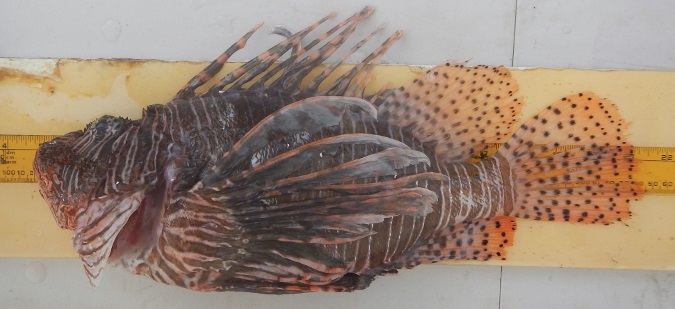NOAA Fisheries is accepting comments on an application for an exempted fishing permit (EFP) from Salty Bones Fisheries. The applicant proposes to test various spiny lobster traps and a fish aggregation device based, non-containment purse trap to harvest lionfish from in Gulf of Mexico (Gulf) and South Atlantic federal waters. Sampling is proposed to occur during the spiny lobster closed season (April 1 through July 31). This study intends to examine the efficiency and effectiveness of the various trap designs for targeting lionfish while limiting bycatch and adverse effects to protected species and habitat. The research would also derive biological life history information to improve lionfish control. In addition, the project would provide information on potential ecological and economic benefits of a lionfish fishery. These results provide the opportunity to gain industry support and provide management information on the use of traps as a viable lionfish harvest gear in the Gulf and South Atlantic. Only lionfish would be harvested under this EFP.

HOW TO COMMENT ON THE APPLICATIONS:
The comment period is open now through April 2, 2018. You may submit comments by electronic submission or by postal mail. Comments sent by any other method (such as e-mail), to any other address or individual, or received after the end of the comment period, may not be considered by NOAA Fisheries.
Application information:
http://sero.nmfs.noaa.gov/sustainable_fisheries/gulf_fisheries/LOA_and_EFP/index.html
Electronic Submissions: Submit all electronic public comments via the Federal e-Rulemaking Portal.
- Go to https://www.regulations.gov/docket?D=NOAA-NMFS-2018-0013
- Click the “Comment Now!” icon, complete the required fields.
- Enter or attach your comments.
Mail: Submit written comments to Kelli O’Donnell, NOAA Fisheries, Southeast Regional Office, 263 13th Avenue South, St. Petersburg, FL 33701.
Program Concepts
- Sampling would occur in two regions off the lower Florida Keys in the Gulf and South Atlantic, up to four times per month in each region during the Florida spiny lobster closed season, April 1 through July 31.
- Spiny lobster trap designs would include all wire traps, in addition to wood and wire traps. In year 1 and 2 1,000 of each design in the Gulf and 500 of each design in the South Atlantic would be deployed for a total 3,000 total traps. All traps would have modified funnel dimensions and would be deployed at depths from 65-300 ft.
- Vessels would also deploy up to 15 purse traps in year 1 (all 15 could be fished in Gulf or South Atlantic or the 15 could be divided between the two regions) and up to 120 total in year 2 (80 in Gulf and 40 in South Atlantic). All traps would be deployed at depths from 65-300 ft.
- Data to be collected per trip would include: gear configuration and fishing effort data (e.g., date and time of deployment and retrieval, latitude, longitude, and water depth of each deployed trawl, bait type used); soak time per area for each trawl; alternative weight and trawl configurations used in different sea states and conditions; trap loss and movement from original set position; protected species interactions; bycatch species, amount, and disposition; and lionfish catch data for each trap type.
- Only lionfish would be harvested.
NOAA Fisheries finds this application warrants further consideration, and is seeking public comment on the application. A final decision on issuance of the EFP will depend on NOAA Fisheries’ review of public comments received, the Gulf of Mexico Fishery Management Council’s and the South Atlantic Fishery Management Council’s recommendations, consultations with the affected states, and the U.S. Coast Guard, as well as a determination that it is consistent with all applicable laws.
About Gulf of Mexico Fishery Management Council
The Gulf of Mexico Fishery Management Council is one of eight regional Fishery Management Councils established by the Fishery Conservation and Management Act of 1976. The Council prepares fishery management plans, which are designed to manage fishery resources within the 200-mile limit of the Gulf of Mexico.
The post NOAA Seeks Comment on Test Trapping for Lionfish appeared first on ODU Magazine-North America’s #1 Digital Fishing Magazine.
















